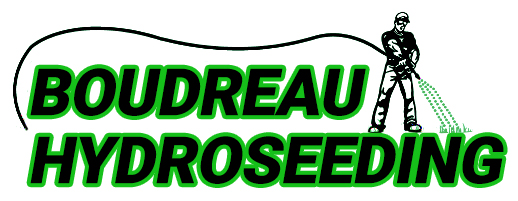WHAT IS HYDROSEEDING? CARE AND BENEFITS OF YOUR HYDROSEED LAWN
What is Hydroseeding??
Hydroseeding is a planting process that uses a slurry of seed and mulch. It is often used as an erosion control technique on construction sites and as an alternative to the traditional process of broadcasting or sowing dry seed.
The slurry often has other ingredients including fertilizer, tackifying agents, fiber mulch, and green dye If planting a relatively large area. Fiber mulch accelerates the growing process by maintaining moisture around the seeds thereby increasing the rate of germination. Hydroseeding can be completed in a very short period of time. It can be very effective for hillsides and sloping lawns to help with erosion control and quick planting. Hydroseeding will typically cost less than planting with sod, but more than broadcast seeding. Results are often quick with high germination rates producing grass growth in about a week to 14 days and mowing maintenance beginning around 3 to 4 weeks from the date of application.
Care of your Hydroseed Lawn
Once your lawn has been hydroseeded, proper care will promote a healthy environment for your lawn to grow to its full potential and get the most from your investment. Remember that a lush green lawn enhances the appearance and the value of any home.
The first 4 weeks are the most important.
Once the newly hydroseeded lawn has set for 24 hours, it is time for watering. Water with a lawn sprinkler for best results. Avoid walking on hydroseeded areas while they are wet. Keep the top of the soil moist but not muddy.
DO NOT OVER WATER.
**Note: in extreme hot weather it is recommended to water more often.
Continue this schedule until the first cutting, then gradually reduce the frequency and increase the duration of the watering. An established lawn requires approximately one inch of water per week, supplied by either rainfall or irrigation.
Once the lawn is established, if you are unable to water, avoid mowing during dry periods.
Areas too large to water
If the hydroseeded area is too large for watering no need to worry. Mother nature will do the work. All is needed is patience. Grass seeds need 7 wet days to get started. Until this happens, the fibramulch contained in the hydroseeding mix will hold all the seed and fertilizer in place until warmth and moisture is provided.
Fertilize your lawn
A high-quality starter fertilizer was applied to your lawn at the time it was hydroseeded but this will wear off in about one month. This fertilizer is designed to feed your lawn during the important establishment period. Once the first month is passed, mow your new lawn and apply a starter fertilizer. It is very important to use a starter fertilizer for the first several months and not a full strength/regular fertilizer as it is too harsh for a new lawn.
A four to six step fertilizer program should be started at this time. No weed killer of any kinds or “full strength” fertilizer can be used during the first 90 days.
Fertilize 3-4 times per year for a healthy lawn
Every fertilizer bag has a 3-number combination that refers to the ratio of nitrogen (N)-encourages leaf growth, phosphorus (P)-encourages root growth and potassium (K)-encourages general vigor, known as N-P-K.
Always use a rotary spreader. Never fill your spreader while on lawn surface as spillage will destroy grass on contact.
When operating a spreader, walk briskly and close the fertilizer opening when turning to begin another row.
Several applications of a complete slow release lawn fertilizer will keep your grass green and healthy. Begin by fertilizing end of May, again mid July and the beginning of September with a lawn fertilizer high in nitrogen to encourage leaf growth. In late September/October, apply a fertilizer high in potassium to help the grass survive during winter season.
Organic and synthetic slow release fertilizers with both nitrogen and potassium provide the nutrition your lawn needs. Follow the rates on the package to ensure you are providing the proper amount of nutrition to your lawn.
Mowing your Lawn
A new lawn should be mowed as soon as the grass blades reach a height of 3 inches, or as soon as the tips of any of the grass blades blow over in the wind.
Mow your lawn often but avoid removing more than one third of the leaf at a time. Lawn mower blades must be kept sharp to cut evenly and prevent damage to your lawn. It is best to keep the grass at a height of 3 to 3.5 inches. When kept at this height, your lawn will establish a deeper root system therefore decreasing risks of dryness, disease and insect infestations.
**It is more beneficial to mow frequently than to allow the lawn to grow very tall and then remove a large portion of the grass all at once. However, in times of hot dry weather, your grass should be mowed less frequently to conserve its moisture.
For any further questions, please do not hesitate to contact me.
Benefits of Hydroseeding
- Hydroseeding can be completed in a very short period of time
- Effective for hillsides and sloping lawns to help with erosion control
- Quick results with high germination rates
- Seed germination in as little as one week

